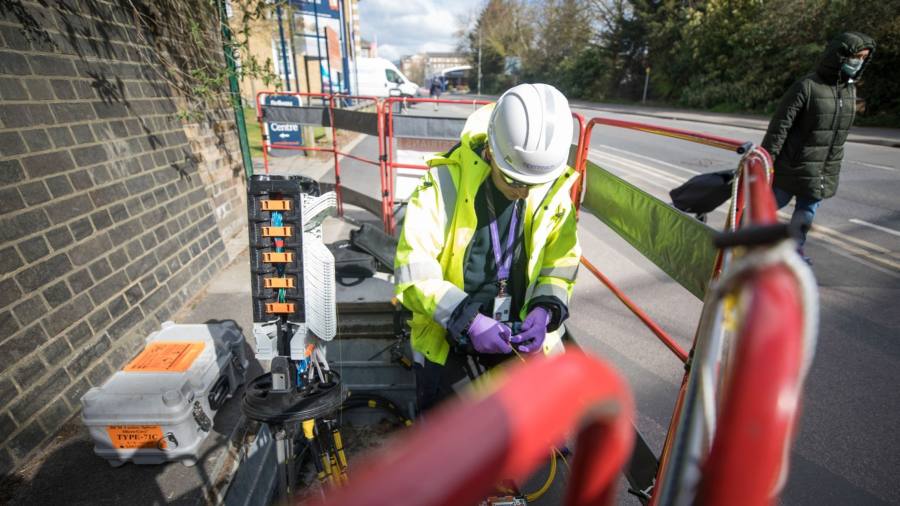[ad_1]
BT networking division Openreach is looking to reduce its broadband prices to attract new customers and lock in big wholesale clients like Vodafone, TalkTalk, and Sky as rivals lay full-fibre cables across the UK.
The incumbent network operator, part of BT Group, has met some of its biggest corporate customers to suggest a number of changes to its pricing structure that would make its offer more attractive and help them move customers from copper to full fibre, according to two people who attended the meetings.
Openreach makes money by wholesaling its broadband to internet service providers, including its parent group BT.
For many years its only rival was Virgin, which also had its own network, but more recently almost a hundred smaller alternative networks — or “altnets” — have emerged with the goal of laying fibre as quickly as possible to attract customers frustrated by their existing service.
“BT is facing the biggest competitive threat in its history, so a plan to once again cut wholesale prices may well be a sign of desperation from the incumbent to flex its fibre muscles and lock in internet service providers looking elsewhere,” said a competitor who has seen the outline of the new pricing proposals.
Openreach’s proposal, dubbed “Equinox 2”, would be the second time the group has moved to decrease its wholesale pricing structure in the space of two years. The first, announced in July of last year, was challenged by recently merged Virgin Media O2 and the UK’s largest altnet, CityFibre, which both told the regulator that the move was uncompetitive. CityFibre unsuccessfully tried to block the move with the Competition Appeal Tribunal.
Equinox 1 offered a fixed price for 10 years and cheaper prices for Openreach full fibre products if broadband sellers committed to stop selling legacy copper products and reached certain fibre sales targets.
The latest proposed pricing changes, seen by the Financial Times, include reducing the amount Openreach charges companies like Sky on an ongoing basis for use of the network, decreasing the share of revenue per customer that goes to Openreach and cutting the amount it charges for migrating customers from copper lines to fibre lines by between £30 and £37.
Openreach is planning to formally notify the industry in December, at which point companies can consult with Ofcom, the regulator, for 90 days, before a planned start date of April.
The changes have so far been warmly received by some of Openreach’s customers, according to people briefed on the discussions.
“First of all it was all about building. Now it’s about getting good at connecting customers,” said Katie Milligan, managing director of customer, commercial and propositions at Openreach, in response to FT questions about the proposed new pricing. “It is of course for discussion . . . invariably things will change once we have [companies’] feedback.”
The move to reduce charges for migrating customers comes after TalkTalk released research last month which found that one-quarter of people in the UK are likely to still have slower connections on legacy copper networks by 2030 because of reluctance to switch providers, in part due to cost.
Openreach has responded to the altnet threat by ramping up its building efforts, spending £12bn to reach 25mn homes by the end of 2026. Meanwhile, Virgin Media O2 is seeking to upgrade its network to fibre by 2028 and has formed a new joint venture between its owners, Telefónica and Liberty Global, as well as infrastructure fund Infravia, to lay fibre for up to 7mn new premises.
Industry insiders acknowledge that for any company’s business model to be economically viable, they will need to capture about 40 per cent of customers in the locations they are digging, either by selling broadband contracts to consumers directly or by wholesaling to internet service providers.
[ad_2]
Image and article originally from www.ft.com. Read the original article here.

